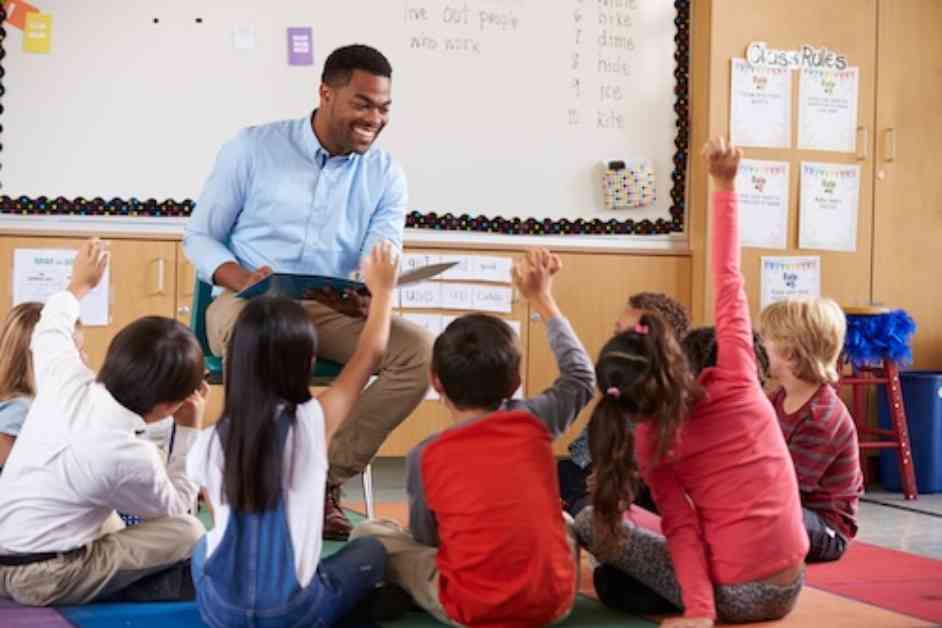Restorative Practices: Nurturing Student Connections
In the bustling hallways and lively classrooms of schools, a profound influence is at play—one that goes beyond academics and textbooks, shaping the very fabric of a student’s social and emotional development. Amidst the laughter, chatter, and occasional chaos, teachers hold a pivotal role in guiding students through the turbulent waters of youth, helping them navigate challenges, conflicts, and relationships with grace and resilience. This is where the power of restorative practices comes into play, offering a framework that goes beyond mere discipline to focus on repairing harm, rebuilding relationships, and fostering a sense of community within the educational landscape.
The concept of restorative practices revolves around a simple yet profound principle: every interaction is an opportunity for connection, growth, and understanding. It emphasizes the importance of building strong relationships, treating others with respect, taking responsibility for one’s actions, repairing harm, and reintegrating individuals into the fabric of the community. While traditional disciplinary measures may address behavior on a surface level, restorative practices delve deeper, seeking to address the root causes of conflict, empower students to take ownership of their actions, and foster a culture of empathy, accountability, and collaboration.
Kim Harding, a seasoned Learning Specialist at the Van Andel Institute for Education, underscores the transformative impact of restorative practices in the classroom. Drawing from her wealth of experience in the field, she highlights the profound shift that occurs when educators adopt a restorative mindset, guiding students through moments of tension, misunderstanding, and discord with compassion, empathy, and a focus on long-term growth.
Building Bridges: The Core Principles of Restorative Practices
At the heart of restorative practices lie a set of core principles that serve as guiding lights for educators seeking to create a nurturing, inclusive, and supportive learning environment. By emphasizing the importance of relationships, respect, accountability, repair, and reintegration, teachers can lay the foundation for a culture of understanding, communication, and mutual support within their classrooms. These principles not only inform how conflicts are addressed but also shape the everyday interactions that form the bedrock of a positive school community.
As students navigate the ups and downs of adolescence, they are bound to encounter moments of conflict, confusion, and frustration. Whether it’s a misunderstanding between friends, a heated exchange in the classroom, or a lingering tension that threatens to disrupt the harmony of the group, restorative practices offer a pathway to resolution that prioritizes dialogue, empathy, and growth. By equipping students with the tools to navigate conflicts, understand their impact on others, and take proactive steps towards resolution, educators can foster a culture of emotional intelligence, resilience, and collaboration that serves students well beyond the classroom walls.
Empowering Educators: Strategies for Implementing Restorative Practices
For teachers looking to integrate restorative practices into their classrooms, a wealth of strategies and tools are at their disposal. From community circles that facilitate open dialogue and reflection to role-play activities that help students understand the scale of a problem, these approaches offer practical ways to nurture empathy, communication, and conflict resolution skills in students of all ages. By incorporating restorative questions, sentence stems, and reflective exercises into their daily routines, educators can create a culture of respect, accountability, and understanding that empowers students to navigate challenges with confidence and grace.
As Kim Harding aptly puts it, “Incorporating restorative practices into the classroom allows teachers to manage conflicts while creating a culture that respects and values each student.” By focusing on relationship-building, accountability, and mutual respect, educators can help students cultivate the emotional intelligence and interpersonal skills they need to thrive in school and beyond. Though implementing restorative practices may require time, effort, and dedication, the rewards—stronger connections, deeper empathy, and lasting impact—are well worth the journey.
In the bustling world of education, where each day brings new challenges, opportunities, and moments of connection, restorative practices stand as a beacon of hope, guiding teachers and students alike towards a future built on understanding, collaboration, and resilience. As classrooms transform into vibrant communities where every voice is heard, every conflict is addressed, and every relationship is nurtured, the true power of restorative practices shines bright, illuminating a path towards a brighter, more compassionate world for all.


